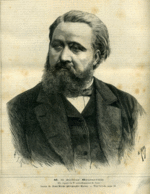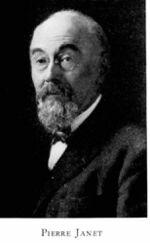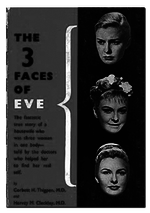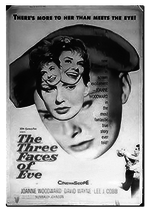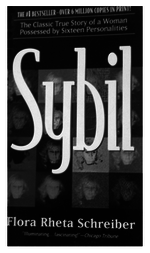History of Dissociative Identity Disorder
Dissociative identity disorder has historically been known by many different terms, including multiplex personality, double existences, dual personality, double personality (1790s), plural personality, dissociated personality (DSM-I (1952)), multiple personality (case of Louis Vivet, 1880s), split personality, multiple personality disorder (MPDPrior to the DSM-IV, dissociative identity disorder was known as multiple personality disorder, which was from 1980-1994. The International Classification of Diseases,(ICD) still uses this label, even though the ICD-11 is expected to change it. The term is misleading. No one can have more than one personality, nor is the disorder a personality disorder. {{See also| Multiple Personality Disorder}}) (DSM-IV (1980))[1]:1 and exchanged personality (1790s) [2]:83. Many of these terms were originally introduced by French or German speaking physicians, which may have led to different terms partly as a result of translating meanings between languages. Throughout historical literature the symptoms of dissociative identity disorder have been described alongside other dissociative symptoms or disorders, including amnesia (a symptom still required for diagnosis today), fugue, derealization and depersonalization, physical symptoms such as non-epileptic pseudoseizures and a known history of child abuse.
Adam Crabtree researched the history of Dissociative Identity Disorder in 1993, when it was known as Multiple Personality Disorder , stating:
Recognition of dissociation as a means of dealing with traumatic material by forming multiple psychic centers led to all effective psychotherapy for Multiple Personality Disorder. The etiological role of child abuse was not acknowledged until modern times, but statistical evidence of sexual crimes against children in later nineteenth-century France may provide a fruitful area of research. A scrutiny of historical cases raises questions about the equivocalness of the concept of multiple personality. It also reveals data that have not yet been fully acknowledged by modern clinicians."[3]
1584-1585 Jeanne Fery - the first documented case of DID
Crabtree (1993) identified two key periods of understanding:
The history of the diagnosis and treatment of multiple personality during the 160-year period preceding The Three Faces of Eve [4] falls into two periods: the magnetic sleep period and the dissociation period. Using magnetic sleep techniques, early investigators learned to control switching and trust the patient for guidance in the treatment."[3]
Despite Crabtree's assertion that the history of dissociative identity disorder goes back to around 1790, a number of researchers have found evidence of cases of DID existing over 200 years before this date. Bliss (1980) credits Paracelsus as the first documented reference to multiple personalities, but Bliss' 1646 reference has not been confirmed.[5] Shortly after Crabtree's research was published a number of cases were discovered from before this time, dating back to at least the 16th century; at the time these were regarded as "individuals possessed by devils and demons",[6]:4 for example the case of Jeanne Fery (Bourneville (1886))[6]:4, a 25 year old nun from Mons, France. [6]:1
Jeanne Fery is believed to be the earliest historical case of DID which can be confidently diagnosed. Fery wrote an account of her own "exorcism" from 1584-5, which was also recorded in great detail by her exorcists, and was republished by Bourneville in 1886; an account of this 109 page description was first published in English in 1996. Bourneville, a colleague of Pierre Janet, diagnosed this as a case of "doubling of the personality", and his description includes all the major criteria and associated features found in the DSM psychiatric manual for the diagnosis of Dissociative identity disorder.[6]:1 Fery's exorcists described the "fragmentation of her identity" and a history of childhood trauma.[6]:1 Fery's alter identities included several internal "devils" who function as protectors, a "demon" who controls her disturbed eating and another called Sanguinaire ("Bloodthirsty") who self-injures by cutting. A third "devil", called Garga ("Throat"), protects her from feeling the pain of childhood beatings but also reenacts the trauma using different forms of self-harm and suicide attempts.[6]:1 Her highly rational and helpful alter identityAltered states of consciousnessExchangeable terms include parts, dissociative parts, personality states, self-states, states, identities, selves, or ego states. Alters are present only in those with dissociative identity disorder or similar presentations of other specified dissociative disorder, where the parts of the personality are highly dissociated and isolated. No alter, including the host alter, is a complete personality, even though an alter might feel as if they are. {{Rp|55-67}}Alters are psychodynamically interacting parts, each with their own separate centers of subjectivity, identity, autonomy, and sense of personal history. {{Rp|55}}An individual with dissociative identity disorder may have few or many |alters, which include a variety of ages, cross gender, animal or objects, with coconsciousness (see coconsciousness) at varying degrees, and [[communication]] can be limited to one direction. (one way amnesia) {{Rp|301}} appears at moments of crisis and "might be described in twentieth-century terms as an internal self helper".[6]:1 She also experiences well known dissociative symptoms which match descriptions of dissociation [conversion] disorders in the ICD-10 manual and expert descriptions of DID, including amnesia for the actions of alters, mutism and conversion blindness (dissociative stupor), inexplicably lost and found objects (dissociative amnesia), experiences of possession (trance and possession disorders), (dissociative convulsions), hearing voices arguingTwo or more voices conversing, they may be arguing. Common in both schizophrenia and dissociative identity disorder. This is a type of auditory hallucination. {{Rp|45}} In dissociative identity disorder the voices belong to alter identities and this may extend to alters who are contending for physical control, for example involving the person feeling a force or an "other" that ties to control or change the person's actions, or feeling or hearing an angry other that tries to control the person.{{Rp|230}}[7]:230 and alters holding onto intense rage and overwhelming sadlness.[7]:234 Also present are physical symptoms which are typically present in dissociative identity disorder and known as somatoform symptoms,[7]:230 in Fery's case these included intense physical pain, pseudoseizures and headaches.[6]:1 Many symptoms were relapsed or exacerbated during the "exorcism rituals"[6]:1, but the account of Fery's recovery describes being treated with "constant care" from her fellow nuns, and "her exorcists' consent to her request that they replace her demons as father and grandfather"; Hart (1996) states that "some of these 'accidental' elements of the exorcism parallel current understanding of trauma-dissociative disorders and recovery process (van der Hart & van der Velden (1987); Goodwin, Hill & Attias (1990)".[6]:21585 to 1794
Another detailed account from the sixteen century describes the experiences of Sister Benedetta, abbess of a Theatine convent in Italy, in 1623 (Brown (1986)).[6]:1 She was described as being possessed by three "angelic boy" alters who would at times beat her causing chronic pain, and take over control of her body, each "speaking a different dialect and producing specific facial expressions and tones of voice." She had amnesia for some acts done by these alters. In Benedetta's case there were hints at the presence of childhood trauma.[6]:1
From 1791 to 1880 the only coherent theory of multiple personality was based on magnetic somnambulism or magnetic sleep, referred to by Crabtree as the "magnetic sleep period".[3] In 1791 Eberhardt Gmelin wrote a detailed 87 page account about a case of "double personality",[8]:4 which he referred to as "exchanged personality" (umgetaushte Persönlichkeit),[9]: 355 describing a twenty-one year-old Stuttugart woman who suddenly exhibited a personality who spoke French rather than German and adopted French mannerisms; both her French and German speaking identities were unaware of each other. [10] [3] [9]:3551794 to 1880
A detailed description of a different state of consciousness was described by the Marquis de Puysegur in France, in the spring 1784. He used a technique he later called "magnetic sleep" or artificial somnambulism on an ailing employee, Victor Race, noticing obvious personality changes, a separation in consciousness and amnesia which was not present in those he had previously used the technique on. [3] Rather than showing the transient symptoms of hypnosis, Victor Race appeared to have the "stable dissociative parts" of a personality, consistent with the trauma-induced "multiple personality" cases. [8]:20
In 1812 Benjamin Rush, considered "the father of American psychiatry"[11]:1967 wrote a chapter about what he called "Dissociation" in his psychiatric text; the first used of term dissociation in a medical context. [8]:5 In 1816 S. L. Mitchell presented the case of Mary Reynolds in the United States. [8]:4 Johann Christian Reil (1759-1813), a professor of medicine in Halle, and head of the clinical institute, is remembered for introducing psychological approaches to German psychiatry. [12] He described multiple personalities as a psychological disorder. [13] [12]
1880 to 1910
The next major phase, from 1880 to the early 1950s, began with a recognition of dissociation and the fact that an individual may be divided into any number of psychic centers arising as the psyche attempts to deal with traumatic experiences. This has been referred to as the "dissociation period". Crabtree (1993)
While Frenchman Louis Auguste Vivet was not the first patient to be described as having multiple personalities he was the first to be explicitly named with multiple personality (rather than double). He was probably the most extensively studied case of "male hysteriaThe prejudicial term "hysterical" came from the myth that hysteria is a specific disorder of women.{{Rp|218}}Hysteria is an historic term which refers to several different disorders. The DSM-II (1968) listed "multiple personality" as a symptom of "Hysterical Neurosis, dissociative type". This later become Multiple Personality Disorder before being renamed to Dissociative Identity Disorder, retaining code 300.14, and becoming part of the Dissociative Disorders category along with Depersonzaliation Disorder (formerly Depersonzaliation Neuroses)."Hysterical Neurosis, conversion type" was listed under "Neuroses" in the DSM-II (code 300.13), and later became "Somatoform Disorder", but is now known as Somatization Disorder in the DSM manual, and Conversion Disorders in the ICD manual.{{Rp|612}} This represents physical symptoms which are common in dissociative disorders.Hysteria also refers to physical symptoms which are believed to have an unconscious psychological cause, for example Conversion Disorder. "Hysteria is still stigmatized and frequently associated with lying or malingering." However, symptoms are not under the person's voluntary control. Cottencin (2013)Hysterical Personality Disorder was renamed to Histronic Personality Disorder. The prejudicial term "hysterical" came from the myth that hysteria is a specific disorder of women.{{Rp|218}}"[14]:1 as it was then known, due to having been admitted to several different asylums from 1880-1886. Vivet's traumatic childhood included an unknown father and a mother who beat him, kept him underfed and was addicted to "shamelessness". From very early childhood he suffered from hysteria, hemoptysis (coughing up blood) and "temporal paralysis" (see dissociative motor disorders) which over time caused muscle wastage in his lower limbs. At age 8 he became homeless and a thief.[14]:2 In 1992 an extreme claim was made that his DID was "iatrogenic"[14]:2 (caused by medical malpractice) but this ignored a number of historical accounts of Vivet's condition. In 1995 Hacking's book Rewriting the soul: Multiple personality and the science of memory attempted to present Vivet as a case of double rather than multiple personality (claiming additional identities were created by malpractice), but this minority view was proved to be incorrect when French psychiatristProfessionals who are medically trained doctors with specialist training in psychiatry. They can prescribe medication, diagnose and conduct research. Besides psychiatric medication treatments include ECT and psychotherapy. Dr Henri Faure discovered Vivet's original medical file soon after the book's publication.[14]:1Between 1880 and 1920, many great international medical conferences devoted a lot of time to sessions on dissociation. During this period Jean-Martin Charcot introduced his ideas of the impact of "nervous" shocks as a cause for a variety of neurological conditions. One of Charcot's students, Pierre Janet,[13] took these ideas and went on to develop his own theories of dissociation. The term "hysteria" was used to refer to a range of mental disorders, including dissociation and conditions often found in people with Dissociative Disorders, including Posttraumatic stress disorder, Somatization Disorder, Conversion Disorder, and Borderline Personality Disorder (which is a common misdiagnosis).[15][13]. At the time it was well known that hysteria often followed traumatic or stressful events.
Janet, best known for the introduction of medical psychotherapy in France, published a major article on the "doubling of personality" in 1886,[12] which was entitled "Les actes inconscients et le dédoublement de la personnalité pendant líétat somnambulisme provoqué",[16] which can be roughly translated as "unconscious acts and the doubling of the personality during a state caused by somnambulism". By the late 19th century it was accepted that emotionally traumatic experiences could cause long-term disorders with a variety of symptoms, with Janet concluding that extreme dissociation resulted in Multiple Personality[13] (now known as DID).
One of the first individuals diagnosed with "multiple personalities" to be scientifically studied was Clara Norton Fowler, under the pseudonym Christine Beauchamp;[17] American neurologist Morton Prince studied Fowler between 1898 and 1904, describing her case study in his 1906 monograph, Dissociation of a PersonalityEvery individual has a personality that is composed of many diverse, fragmentary and generally illusory images of [[Personality|self]]. (see multiples) The DSM-IV uses the term identity in its definition of dissociation. (see identity) {{Rp|127}}. [18] Prince also described the notion of coconsciousness at this time.[18][17]
The "dissociation period" continued, but interest in dissociation and "multiple personalities" was reduced for a number of reasons. After Charcot's death in 1893, Janet continued his work on dissociation and published "The major symptoms of hysteria" in 1907. Sigmund Freud also researched dissociative disorders and the link to abuse although Freud recanted his earlier emphasis on dissociation and childhood trauma due to peer pressure.
1910 to 1930
In 1918, the Statistical Manual for the use of Institutions for the Insane was released in the United States;this was the forerunner for the Diagnostic and Statistical Manual of Mental Disorders, and was provided free of charge to any cooperating institution.[19] A description of most key aspects of Dissociative Identity DisorderPrior to the DSM-IV, dissociative identity disorder was known as multiple personality disorder, which was from 1980-1994. The International Classification of Diseases,(ICD) still uses this label, even though the ICD-11 is expected to change it. The term is misleading. No one can have more than one personality, nor is the disorder a personality disorder. {{See also| Multiple Personality Disorder}} was included in the "Psychoneuroses and Neuroses" group, which covered conditions "in which mental forces or ideas of which the subject is either aware (conscious) or unaware (unconscious) bring about various mental and physical symptoms; in other words these disorders are essentially psychogenic in nature." The description of Hysterical Psychoneuroses reflects amnesia, dissociated emotions, dissociation ("dream states", dissociative (conversion) disorders and alterations in levels of consciousness. The entry reads:
The following types are sufficiently well defined clinically to be specified : (a) Hysterical type: Episodic mental attacks in the form of delirium"Acute reversible mental disorder characterized by confusion and some impairment of consciousness; generally associated with emotional liability, hallucinations or illusions, and inappropriate, impulsive, irrational, or violent behavior delusion"{{Rp|24}}, stupor or dream states during which repressed wishes, mental conflicts or emotional experiences detached from ordinary consciousness break through and temporarily dominate the mind. The attack is followed by partial or complete amnesia. Various physical disturbances (sensory and motor) occur in hysteria, and these represent a conversion of the affect of the repressed disturbing complexes into bodily symptoms or, according to another formulation, there is a dissociation of consciousness relating to some physical function."[19]:26In 1910, Eugen Bleuler introduced the term Schizophrenia to replace "dementia praecox", the term schizophrenia was derived from the Greek, meaning 'split mind disorder'.[20]:238 Ross (2006):239 states that this historic description of schizophrenia did not resembles the DSM-IV criteria for schizophrenia; but closely resembled the criteria for dissociative identity disorder; commenting on the overlap and lack of distinction between dissociative identity disorder and schizophrenia in professional literature which existed for more than a century. Ross (2006):242 also provides evidence that the positive symptoms"In schizophrenia - hallucinations, delusions, and thought disorder" {{Rp|29}} of schizophrenia are more common in dissociative identity disorder; which may explain why schizophrenia is still a very common misdiagnosis. Starting in about 1927, there was a large increase in the number of reported cases of Schizophrenia, which was matched by an equally large decrease in the number of "multiple personality" reports. Bleuler also included "multiple personality" in his category of Schizophrenia. Bleuer's description of schizophrenia was one of the reasons 1903 through 1978 showed a dramatic decline in the number of reports of "multiple personality" after the diagnosis of Schizophrenia became popular, especially in the United States.[21][20]:238
1930 to 1950
In 1950, Eugen Bleuler, still regarded as a pioneer for his work on schizophrenia, described it as a lack of integration and unity in the personality:
The disease is characterized by a specific type of alteration of thinking, feeling, and relation to the external world which appears nowhere else in this particular fashion. In every case we are confronted with a more or less clear-cut splitting of the psychic functions. If the disease is marked, the personality loses its unity; at different times different psychic complexes seem to represent the personality. Integration of different complexes and strivings appears insufficient or even lacking. The psychic complexes do not combine in a conglomeration of strivings with a unified resultant as they do in a healthy person; rather, one set of complexes dominates the personality for a time, while other groups of ideas or drives are "split off" and seem either partly or completely impotent."[22]:9
Ferenczi, an army psychiatrist during World War I, was also a psychoanalytic writer who investigated divided personality states. He referred to "splits in the personality" as reflecting the structure of the psyche, stating that the spits in personality were related to childhood trauma.[23] This provided a basis prototype of the posttraumatic model of dissociation and Dissociative Identity Disorder. Fairburn (1944/1992) viewed dissociation as the basis of hysteria, referring to involving it as a split of the ego. [23] Dissociation was also studied by Lipton (1943), Taylor & Martin (1944) and Maddison (1945). It was recognized in the 1980s that Dissociative Identity Disorder patients are often misdiagnosed as suffering from Schizophrenia and this is still the case now.[24]
The Diagnostic and Statistical Manual of Mental Disorders DSM was first published in 1952 by the American Psychiatric Association (APAThe APA is a scientific and professional organization that represents psychiatrists in the United States. The American Psychiatric Association publishes the DSM. Commonly confused with the American Psychological Association.)[25][26] but did not become frequently used until the 1968 publication of the DSM-II.[27] The DSM-I separated dissociative reactions from other reactions,[11]:1965 clearing recognizing dissociation. The DSM-I entry reads"000-x02 Dissociative reaction
This reaction represents a type of gross personality disorganization, the basis of which is neuroticNeurosis is an emotional disorder. Neurotic refers to a person displaying a symptom of emotional distress, which could range from anxiety, panic attacks depression, and lying, to promiscuity. {{Rp|97}} This historical term referred to a very large group of conditions, which were later divided between Mood Disorders, Dissociative Disorders, Anxiety Disorders, Somatization Disorder and Personality Disorder. Neurosis was removed from the DSM completely because it suggested a "cause" common to the categories under that term, and to "reduce confusion" {{Rp|272}} disturbance,although diffuse dissociation may at times appear psychoticA person experiencing psychosis, or a characteristic of psychosis. {{Rp|24}}... The repressed impulse giving rise to the anxiety may be discharged by, or deflected into, various symptomatic expressions, such as depersonalization, dissociated personality, stupor, fugue, amnesia, dream state, somnambulism, etc"[28]:22
The term "dissociated personality" is similar to the DSM-IV's term "dissociated states", is one of several different terms used to describe dissociative identity disorder.[29][1]:1 However, before the DSM-II the DSM-I was often not used; instead many professionals continued to use the 1942 "Standard Nomenclature of Disease", a revision of the American Medical Association's 1934 classification; this was known commonly referred to as the 1942 Revised Classification (RC). Dissociative identity disorder's classification in the RC was under the diagnosis of "HysteriaThe prejudicial term "hysterical" came from the myth that hysteria is a specific disorder of women.{{Rp|218}}Hysteria is an historic term which refers to several different disorders. The DSM-II (1968) listed "multiple personality" as a symptom of "Hysterical Neurosis, dissociative type". This later become Multiple Personality Disorder before being renamed to Dissociative Identity Disorder, retaining code 300.14, and becoming part of the Dissociative Disorders category along with Depersonzaliation Disorder (formerly Depersonzaliation Neuroses)."Hysterical Neurosis, conversion type" was listed under "Neuroses" in the DSM-II (code 300.13), and later became "Somatoform Disorder", but is now known as Somatization Disorder in the DSM manual, and Conversion Disorders in the ICD manual.{{Rp|612}} This represents physical symptoms which are common in dissociative disorders.Hysteria also refers to physical symptoms which are believed to have an unconscious psychological cause, for example Conversion Disorder. "Hysteria is still stigmatized and frequently associated with lying or malingering." However, symptoms are not under the person's voluntary control. Cottencin (2013)Hysterical Personality Disorder was renamed to Histronic Personality Disorder. The prejudicial term "hysterical" came from the myth that hysteria is a specific disorder of women.{{Rp|218}} (anxiety hysteria, conversion hysteria and subgroups)",[26]:11 diagnostic code 161 in the PSYCHONEUROSES section, which was directly mapped to four different but similar DSM-II diagnoses, including "300.14 Hysterical neurosisThe prejudicial term "hysterical" came from the myth that hysteria is a specific disorder of women.{{Rp|218}}Hysteria is an historic term which refers to several different disorders. The DSM-II (1968) listed "multiple personality" as a symptom of "Hysterical Neurosis, dissociative type". This later become Multiple Personality Disorder before being renamed to Dissociative Identity Disorder, retaining code 300.14, and becoming part of the Dissociative Disorders category along with Depersonzaliation Disorder (formerly Depersonzaliation Neuroses)."Hysterical Neurosis, conversion type" was listed under "Neuroses" in the DSM-II (code 300.13), and later became "Somatoform Disorder", but is now known as Somatization Disorder in the DSM manual, and Conversion Disorders in the ICD manual.{{Rp|612}} This represents physical symptoms which are common in dissociative disorders.Hysteria also refers to physical symptoms which are believed to have an unconscious psychological cause, for example Conversion Disorder. "Hysteria is still stigmatized and frequently associated with lying or malingering." However, symptoms are not under the person's voluntary control. Cottencin (2013)Hysterical Personality Disorder was renamed to Histronic Personality Disorder. The prejudicial term "hysterical" came from the myth that hysteria is a specific disorder of women.{{Rp|218}}, dissociative type",[26]:11 which included "multiple personality" as a symptom.[27]
From the 1950s, movie reviewers began looking for psychoanalytical concepts in movies.[2] In 1954 psychiatrists Corbett H. Thigpen and Hervey M. Cleckley published "A case of multiple personality"[30], writing the book "The Three Faces of Eve" in 1957 from their point of view as the patient's psychiatrists.[4] Also in 1957, an American film adaptation of this book, also called The Three Faces of Eve, was released. The subject of the case study, book and film was Chris Costner Sizemore, whose identity was not publicly known at the time. Actress Joanne Woodward won an Academy Award for the roles of Eve's three identities, Eve Black, Eve White and Jane in the film.[2] Sizemore's identity was revealed only in 1975; she wrote her autobiography "I'm Eve" in 1977,[31] followed by several other books about her recovery from DID, including her description of the integration of her identities in "A mind of my own" (1989).
1960 to 1980
Herbert Spiegel (1963) was recognized dissociation as a defensive process, and as part of a conceptual framework; using a spectrum or continuum to describe the degree of dissociation. He saw the defensive nature of dissociation as a "fragmentation process that serves to defend against anxiety and fear (or instinctual demands)" and recognized its relationship with repressionFreud's term for an unconscious defense mechanism in which unacceptable mental contents are banished or kept out of consciousness; important in normal psychological development and in neurotic and psychotic symptoms formation. {{Rp|29}}Repressed memory is a term mostly used by the False Memory Syndrome Foundation and their followers, that is meant to refer to when memories are unconsciously, suppressed. This is not a real term and is not the same as dissociation. {{Rp|34-35}}. [23] This was known as the dissociation-association continuum. Herbert Spiegel viewed dissociation as both the disintegration of otherwise associated ideas and the constriction of awareness.
The second edition of the DSM, known as the DSM-II, was published in 1966[26]; until being updated in 1980,[32] it referred to dissociative identity disorder as "Hysterical NeurosisThe prejudicial term "hysterical" came from the myth that hysteria is a specific disorder of women.{{Rp|218}}Hysteria is an historic term which refers to several different disorders. The DSM-II (1968) listed "multiple personality" as a symptom of "Hysterical Neurosis, dissociative type". This later become Multiple Personality Disorder before being renamed to Dissociative Identity Disorder, retaining code 300.14, and becoming part of the Dissociative Disorders category along with Depersonzaliation Disorder (formerly Depersonzaliation Neuroses)."Hysterical Neurosis, conversion type" was listed under "Neuroses" in the DSM-II (code 300.13), and later became "Somatoform Disorder", but is now known as Somatization Disorder in the DSM manual, and Conversion Disorders in the ICD manual.{{Rp|612}} This represents physical symptoms which are common in dissociative disorders.Hysteria also refers to physical symptoms which are believed to have an unconscious psychological cause, for example Conversion Disorder. "Hysteria is still stigmatized and frequently associated with lying or malingering." However, symptoms are not under the person's voluntary control. Cottencin (2013)Hysterical Personality Disorder was renamed to Histronic Personality Disorder. The prejudicial term "hysterical" came from the myth that hysteria is a specific disorder of women.{{Rp|218}}, dissociative type". The DSM-II classified both Hysterical neurosis, dissociative type and Hysterical neurosis, conversion type in the NEUROSES section, along with Depersonalization, Anxiety, Depressive and Obsessive Compulsive.[26] The DSM-II stated:
"In the dissociative type, alterations may occur in the patient's state of consciousness or in his identity, to produce such symptoms as amnesia, somnambulism, fugue, and multiple personality." The code 300.14 was assigned, which is used in the DSM-5 today.[33][27][34]:155
The next popular media featuring dissociative identity disorder was "SybilSybil is a biography describing the life of a woman with suppose dissociative identity disorder, (which was thought to actually be otherwise specified dissociative disorder) published as a book in 1973 and released as a TV movie in 1976.The diagnosis of dissociative identity disorder began in the last 1800s with Pierre Janet, a French psychiatrist, and William James, a student of philosophy and psychology." {{Rp|12-13}} "Sybil" included descriptions of the severe abuse and sexual abuse she suffered during her childhood, and the help she received from her psychiatrist, Dr. Wilbur. {{See also| History of DID}}," a biography published in 1973,[35] which described the life of a shy woman known as Shirley Ardell Mason, referred to as "Sybil" in the book. This included descriptions of the severe abuse and sexual abuse she suffered during her childhood, and the help she received from her psychiatrist, Dr. Cornelia Wilbur. The book Sybil describes dissociative amnesia, horrific sexual abuse and suicide attempts which Shirley made. It also describes how Dr Wilbur contacts "Sybil's" pediatrician and hears an account of the extensive scaring he found when he treated her for a bladder problem as a child. Dr Wilbur also visits Shirley's childhood home and sees the equipment that Shirley's mother had used to torture her as a child. The film "Sybil" was a TV movie released in 1976, with Sally Field winning an Emmy Award for starring in the lead role of Sybil[2]. The number of cases of dissociative identity disorder diagnosed sharply increased in the late 1970s and throughout the 1980s, which led to controversy.[2] Some professionals extremely skeptical of the diagnosis were found to be falsifying of clinical data[21], deliberately interfered with the clinical care of patients and repeatedly harassing patients and/or therapists.[36]
In the 1970s, Hilgard published his neodissociation theory (1977), studies by Ludwig et al. (1972) introduced contemporary scientific study of dissociation and further research on dissociative identity disorder led to the separate section for dissociative disorders in the DSM-III (published in 1980). Also in 1980 Bliss, Coons, Greaves and Rosenbaum published landmark articles, beginning a huge increase in the rate of diagnosis for DID. Rosenbaum's article "The role of schizophrenia in the decline of diagnoses of multiple personality" [21] [37]:1711980 to 1993
The DSM III psychiatric manual, published in 1980, renamed DID to Multiple Personality Disorder; for the first time this was a separate diagnosis rather than one of a number dissociative symptoms grouped together as one diagnosis. The book the "Minds of Billy Milligan" was published in 1981, and adapted to cinema as The Crowded Room in 2008.(citation needed) In 1986 and 1997, Lipton investigated the presence of two adult personas within an individual, one good and one bad, this phenomena he referred to as "doubling", describing it as:
A process called "doubling" is described as a division of the self into two functioning wholes. [38]
Doubling is a mechanism whereby a person could deny the reality of their harmful deeds whilst appearing to family and friends as a good and respectable person; he described it as a way for a person involved in genocide to avoid guilt. [38] He made a clear distinction between doubling and Multiple Personality Disorder and that the origins and symptoms of both conditions were different. Doubling has never been a psychiatric diagnosis and avoids rather than causes distress.
The DSM III also classified "Multiple Personality Disorder" in the Dissociative Disorders section, not in the Personality Disorders section. It was also known as multiple personality disorder in the World Health Organization's ICD manual[39]. By 1980, there were 200 diagnosed, reported cases of dissociative identity disorder, increasing to 20,000 from 1980 to 1990. The first scholarly monographs on the topic appeared in 1986.(citation needed)Interpersonality amnesia was removed as a diagnostic feature when the DSM-III-R was published in 1987, which may have contributed to the increasing frequency of the diagnosis. The DSM]-III-R made alterations to the wording of the diagnostic criteria, which reflected the increased understanding and research into the disorder.[32]. This included referring to alters as "personalities" or "personality states"[32].
1994 to 2000
Multiple personality disorder was renamed to its current name of Dissociative Identity Disorder in 1994, when the the DSM-IV was published.[29] In the mid-1990s scientific publications regarding Multiple Personality Disorder appeared to peak then rapidly decline, however this was partly due to some papers being overlooked by those disregarding the new term Dissociative Identity Disorder which was used in the American DSM from 1994, but not the World Health Organization's ICD manual. Over the longer term research of the disorder has increased rather than declined, and a wide variety of peer-reviewed international research is now available for dissociative disorders including DID.[40]
In 1994, the DSM-IV replaced the criteria again and changed the name of the condition from Multiple Personality Disorder to the current "Dissociative Identity Disorder" to emphasize the importance of changes to consciousness and identity rather than personality. The inclusion of interpersonality amnesia helped to distinguish Dissociative Identity Disorder from unspecified types of dissociative disorders, but the condition retains an inherent subjectivity due to difficulty in defining terms such as personality, identity, ego-state and even amnesia.
The ICD-10 still classifies Dissociative Identity Disorder as a "dissociative [conversion] disorder" and retains the name "Multiple Personality Disorder" with the classification number of F44.8.81.[39]
2000 Onwards
In 2007, another film named "Sybil" was produced based on the 1973 book. After Shirley's death, controversial journalist Debbie Nathan published "Sybil Exposed" (2011) in an attempt to discredit Sybil's diagnosis as a hoax created by a manipulative psychiatrist; despite the fact Shirley Mason never recanted. This book relied heavily on telephone calls for references, and Shirley's close family were not interviewed.[41] Prior to this publication, Nathan was well know for her strong views opposing Dissociative Identity Disorder and her many attempts to discredit survivors of ritual abuse, she has also been linked with the False Memory Syndrome Foundation. Also in 2011, Patrick Suraci Ph.D, a licensed psychologist who knew Shirley, but never treated her, published "SYBIL: In Her Own Words The Untold Story of Shirley Mason, Her Multiple Personalities and Paintings"[42] with the support of Naomi Rhodes, Shirley's closest living relative. After the publication of Nathan's book, legal action by Suraci forced publisher Simon and Shuster to correct a false statement on the dust jacket; Suraci also provided additional evidence of false and fabricated statements included in the book, these can be viewed online.[43] These were later verified by others.[42] Suraci's book SYBIL: In Her Own Words includes copies of Shirley's art work, which reflected how she saw herself. Coons (2013) confirmed "the story of Sybil is true, not fraudulent or fiction". [44]
The DSM-5 published in May 2013 maintained the diagnosis of Dissociative Identity Disorder.
Edit this site
We encourage those with knowledge of the trauma-stressor and dissociative disorders to join our project and help to create an accurate and helpful information based wiki. To do so, simply make an account and review our editor guidelines.Other branches of the Trauma and Dissociation Project
Dissociative Identity Disorder.org is a multi-authored peer written site, reviewed by a health care professional.
References
- ^ a b Brenner, Ira. The Characterological Basis of Multiple Personality. American Journal of Psychotherapy, volume 50, issue 2, page 154-166.
- ^ a b c d e Plante, Thomas G., Ph.D. (editor) (2013). . Praeger, ABC-CLIO, LLC. 978-0-313-39836.
- ^ a b c d e Crabtree, Adam. Multiple personality before "Eve.". Dissociation: Progress in the Dissociative Disorders, volume 6, issue 1, page 66-73.
- ^ a b Thigpen, Corbett Hilsman, and Hervey Milton Cleckley. The three faces of Eve. Secker & Warburg, 1957. http://scholarsbank.uoregon.edu/xmlui/bitstream/handle/1794/1547/Diss_6_1_9_OCR_rev.pdf
- ^ Freyd, Jennifer J. "A New Publisher, a New Archive, and an Old Mystery." (2008): 439-444.
- ^ a b c d e f g h i j k l Van der Hart, Onno; Lierens, Ruth, Goodwin, Jean (1996). Jeanne Fery: A Sixteen Century Case of Dissociative Identity Disorder. The Journal of Psychohistory, volume 24, issue 1, page 18-35.
- ^ a b c Dell, Paul F., O'Neil, John A. (Eds) (2009). Dissociation and the dissociative disorders: DSM-V and beyond. Taylor & Francis..
- ^ a b c d Van der Hart, Onno (2010) (coauthors: Dorahy, Martin J.). . Routledge..
- ^ a b Greaves, George B. (1993). . American Psychiatric Press..
- ^ Gmelin, Eberhart. Materialien für die Anthropologie. Vol. 2. 1793.
- ^ a b Sadock, Benjamin James (2008) (coauthors: Sadock, Virginia Alcott). . Lippincott Williams & Wilkins..
- ^ a b c Shorter, Edward. A historical dictionary of psychiatry. Oxford University Press, USA, 2005. p148
- ^ a b c d Weckowicz, Thaddeus E., and H. Liebel-Weckowicz. A history of great ideas in abnormal psychology. Vol. 66. North Holland, 1990.
- ^ a b c d Henri, Faure; Kersten, John, Koopman, Dinet, Van der Hart, Onno (1997). The 19th Century DID case of Louis Vivet: New Findings and Re-Evaluation. Dissociation, volume 10, issue 2, page 104-113.
- ^ van der Hart, Onno; Horst, Rutger (1989). The Dissociation Theory of Pierre Janet. Journal of Traumatic Stress, volume 2, issue 4, April 14, 1989, page 397-412. (doi:10.1002/jts.2490020405)
- ^ Janet, Pierre. Les actes inconscients et Ie dédoublement de la personnalité pendant líétat somnambulisme provoqué. Revue Philosophique, volume 22, issue II, page 577-792.
- ^ a b Prince, Morton. "Miss Beauchamp: The psychogenesis of multiple personality." (1939)
- ^ a b Prince, Morton. "The dissociation of a personality." Journal of Abnormal Psychology (1906) 1.5 (1906): 236-239.
- ^ a b American Medico-psychological Association/National Committee for Mental Hygiene, (1918). Statistical Manual for the use of Institutions for the Insane. New York:
- ^ a b Ross, Colin A. (2006). . Routledge..
- ^ a b c Rosenbaum, Milton. The Role of the Term Schizophrenia in the Decline of Diagnoses of Multiple Personality. Archives of General Psychiatry, volume 37, issue 12, page 1383-1385. (doi:10.1001/archpsyc.1980.01780250069008)
- ^ Bleuler, Eugene (1950). . International Universities Press. mXV9AAAAMAAJ.
- ^ a b c Dell, P.F.. A new model of dissociative identity disorder. Psychiatric Clinic North America, volume 29, issue 1, page 1-26. (doi:10.1016/j.psc.)
- ^ Guidelines for Treating Dissociative Identity Disorder in Adults, Third Revision (2011)
- ^ American Psychiatric Association: Diagnostic and Statistical Manual of Mentral Disorders. (First edition) Washington, D.C. 1952
- ^ a b c d e Spitzer, Robert L.; Wilson, Paul T. (1968). A guide to the American Psychiatric Association's new diagnostic nomenclature for New York State Department of Mental Hygiene Personnel. Psychiatric Quarterly, volume 43, issue 3, 1, page 487-503. (doi:10.1007/BF01564387)
- ^ a b c The Committee on Nomenclature and Statistics of the American Psychiatric Association, (1968). DSM-II DIAGNOSTIC AND STATISTICAL MANUAL OF MENTAL DISORDERS (Second Edition). American Psychiatric Association.
- ^ Blair Simpson, Helen, Neria, Yuval, Lewis-Fernández, Roberto (Eds) (2010). Anxiety Disorders: Theory, Research and Clinical Perspectives edited by Helen Blair Simpson, Yuval Neria, Roberto. Cambridge Illustrated University Press..
- ^ a b American Psychiatric Association, (1994). Diagnostic and statistical manual of mental disorders:DSM-IV. American Psychiatric Association..
- ^ Thigpen, Corbett; Cleckley, Hervey (1954). A case of multiple personality. The Journal of Abnormal and Social Psychology, volume 49, issue 1.
- ^ Sizemore, Chris Costner, and Elen Sain Pittillo. I'm Eve. Garden City^ eNew York New York: Doubleday, 1977.
- ^ a b c Kluft,, R. P.; Steinberg, M., & Spitzer, R. L. (1988). DSM-III—R revisions in the dissociative disorders: An exploration of their derivation and rationale. Dissociation: Progress in the Dissociative Disorders.. Dissociation, volume 1, page 039-046.
- ^ Simpson, Helen Blair (2010) (coauthors: Neria, Yuval; Lewis-Fernández, Roberto). Anxiety Disorders: Theory, Research and Clinical Perspectives. Cambridge University Press..
- ^ American Psychiatric Association, (2013). Desk Reference to the Diagnostic Criteria from DSM-5. APA.
- ^ Schreiber, Flora Rheta (1973). Sybil: The true story of a woman possessed by 16 separate personalities. New York: Warner Books..
- ^ Dell, Paul F.. Professional Skepticism about Multiple Personality. Journal of Nervous & Mental Disease, volume 176, issue 9.
- ^ Ross, Colin A. (1994). . American Psychiatric Pub..
- ^ a b Lifton, Robert J. "Reflections on genocide." Psychohistory Review (1986).
- ^ a b World Health Organization, (2010). International classification of diseases 10th revision, version: 2010. World Health Organization..
- ^ Martınez-Taboas, Alfonso, et al. "Growing Not Dwindling" Psychol Bull 138 (2013): 550Y588.
- ^ Nathan, Debbie. "Sybil exposed." (2011).
- ^ a b Coons, Philip M. "Sybil in Her Own Words: The Untold Story of Shirley Mason, Her Multiple Personalities and Paintings, by P. Suraci: (2011). Abandoned Ladder, 366 pp." Journal of Trauma & Dissociation 14.3 (2013): 359-361.
- ^ http://members.authorsguild.net/psuraci/ Patrick Suraci, Ph.D. Accessed August 18,2013 from
- ^ Sybil in Her Own Words: The Untold Story of Shirley Mason, Her Multiple Personalities and Paintings, by P. Suraci. Philip M. Coons, Journal of Trauma & Dissociation Vol. 14, Iss. 3, 2013
Cite error: Reference "Bliss1980" "$2" "$3" is not used in prior text.
